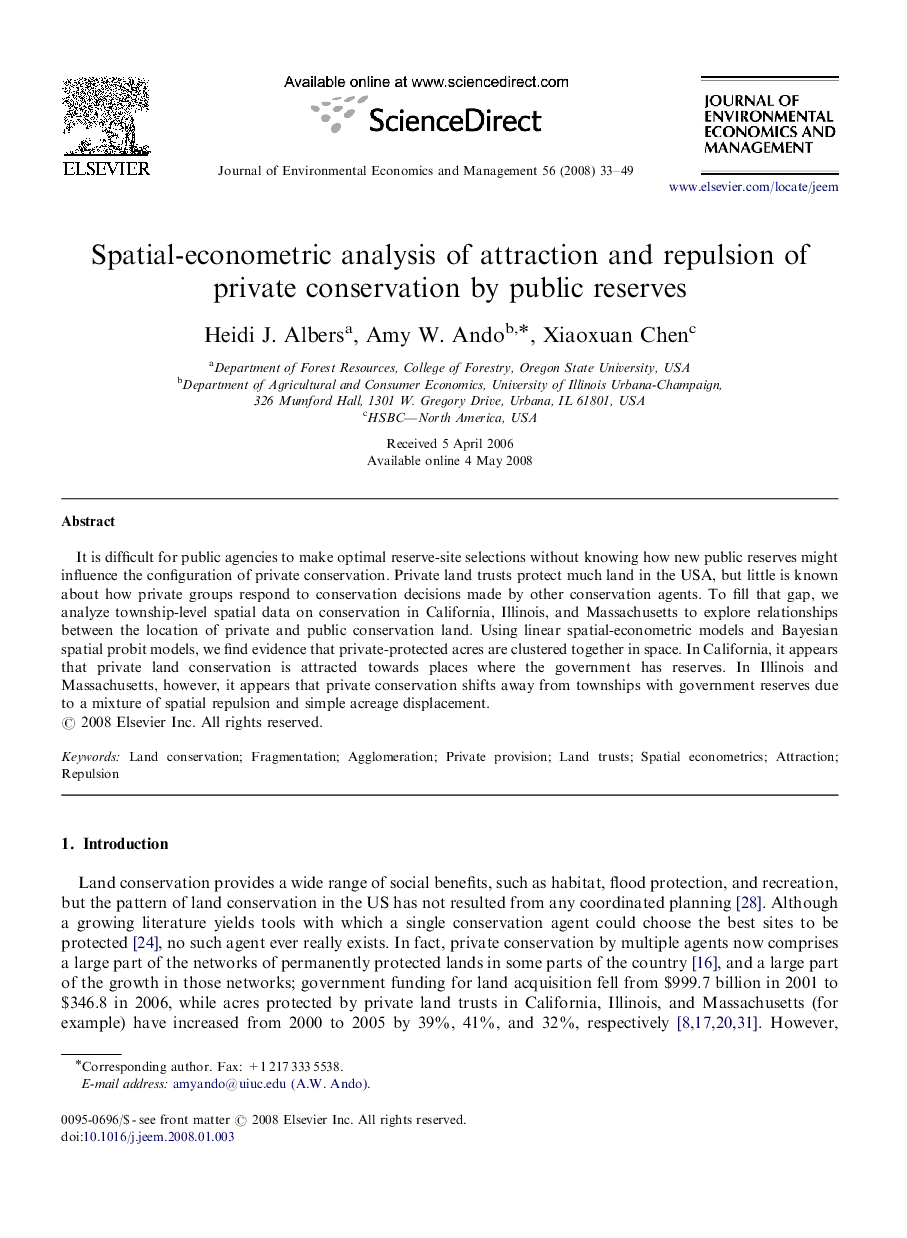| Article ID | Journal | Published Year | Pages | File Type |
|---|---|---|---|---|
| 958953 | Journal of Environmental Economics and Management | 2008 | 17 Pages |
It is difficult for public agencies to make optimal reserve-site selections without knowing how new public reserves might influence the configuration of private conservation. Private land trusts protect much land in the USA, but little is known about how private groups respond to conservation decisions made by other conservation agents. To fill that gap, we analyze township-level spatial data on conservation in California, Illinois, and Massachusetts to explore relationships between the location of private and public conservation land. Using linear spatial-econometric models and Bayesian spatial probit models, we find evidence that private-protected acres are clustered together in space. In California, it appears that private land conservation is attracted towards places where the government has reserves. In Illinois and Massachusetts, however, it appears that private conservation shifts away from townships with government reserves due to a mixture of spatial repulsion and simple acreage displacement.
